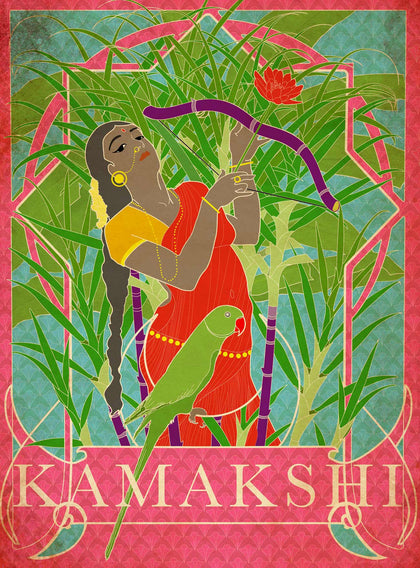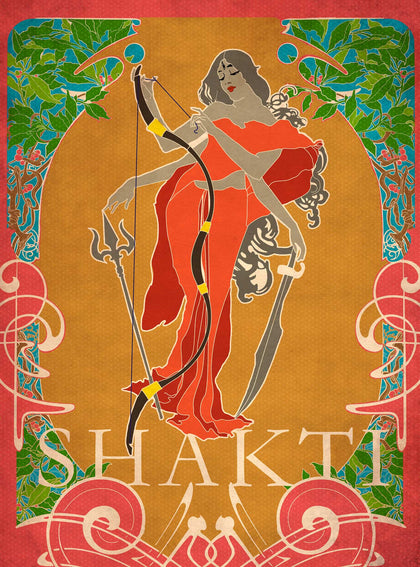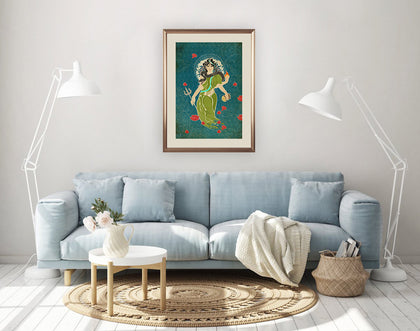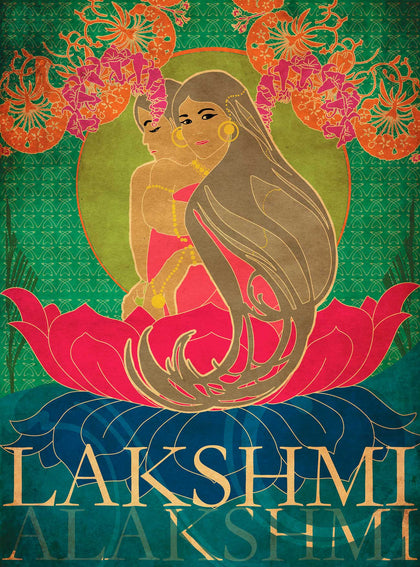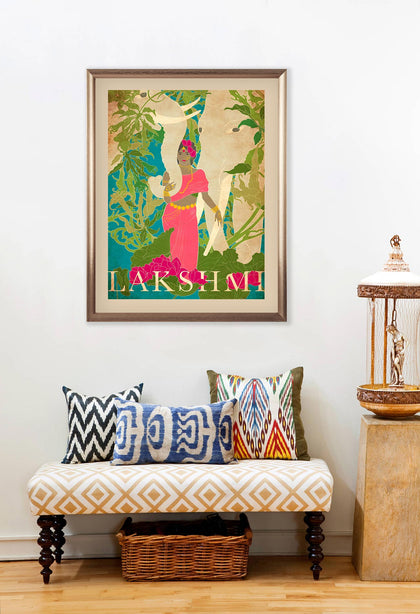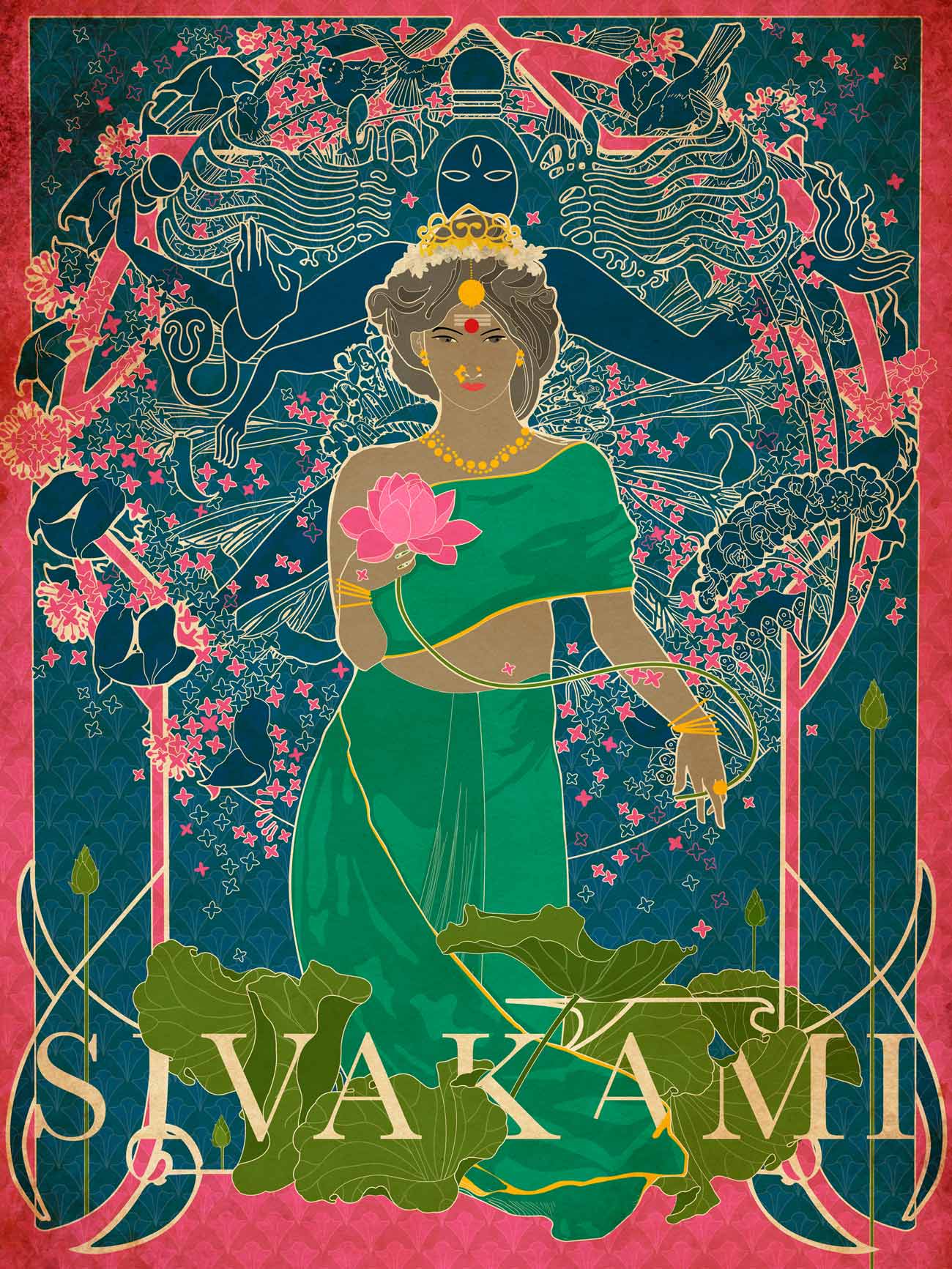Description
Still wearing her crown, (for she was born a princess), and holding a lotus, an unusually opulent version of Parvati, is here in her most beautiful form – Sivakami, the one Shiva desires. As the wind awakens, she stands calm and still watching her husband begin the Thandav, a dance so powerful it creates and destroys the universe. She is the only one who can draw him, through anger or moaning, through Thandav or Thapas. Shiva, a god capable of great passion, had locked himself away from the world, after losing his first wife Sati. Sivakami through her beauty and her mind made him open his eyes to her, bringing him back into samsara – into life, love and their very unique family. She is nature – Prakriti, returning Purusha from his mind into reality. She is as calm as he is animated - a reversal of roles. The usual business of things holds the male as the passive force of the universe and the female as the active one. As Sivakami and Natraja, Parvati and Shiva, take the other one’s place.
About the Series:
This artwork is part of the “Sister Misfortune” series, through which the artist, Smruthi Gargi Eswar, narrates lesser-known stories from Indian mythology, while reflecting on the narrative surrounding women in our culture. Various Indian goddesses (devis) are depicted with a refreshing artistic lens.
In India, there is a constant burden on women to be “Devi-like”. Through this series, the artist attempts a reverse deification of the goddesses, making them appear like real women, in a real world. The series is an exploration not just of duality, but of multiplicity. It compels us to question our attitudes - women towards themselves, men towards women. How does the idea of a goddess coexist within every woman? How do we, as a society, so casually dismiss, disrespect, disregard, and defile in our everyday existence, those who we have bedecked with gold and enshrined in a temple?





















































































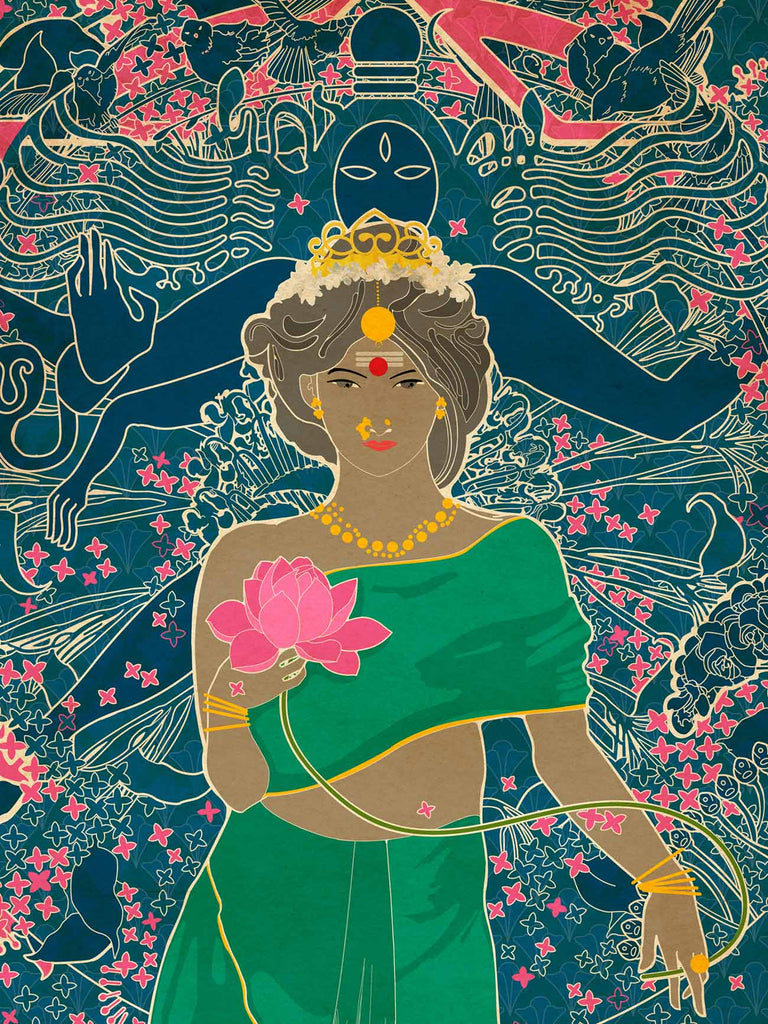

 View Full Screen
View Full Screen































